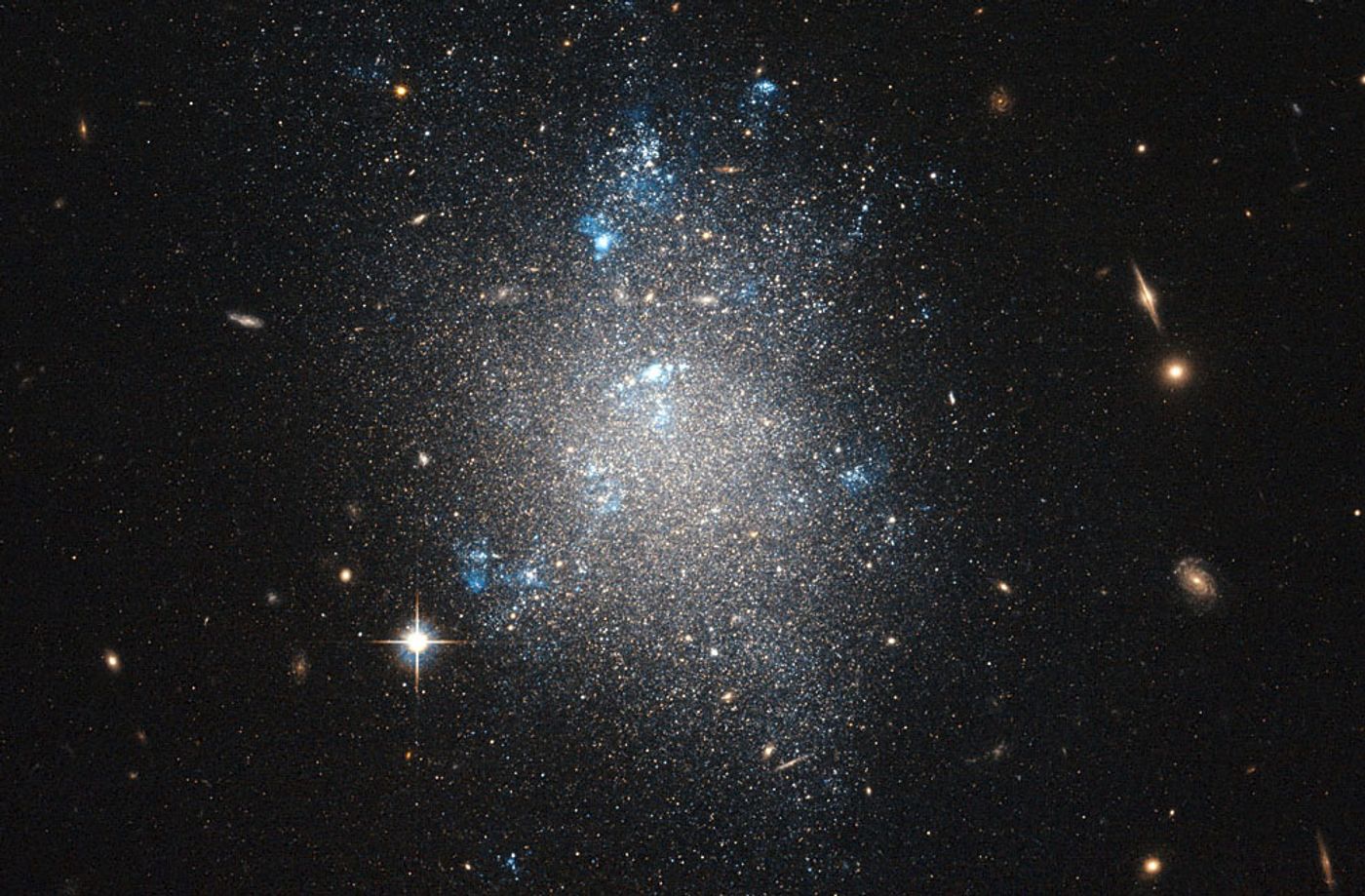Dwarf Galaxies Were an Instrumental Part of the Early Universe
When you think about the universe today, you probably think about an infinitely-expanding dark bubble filled with light swirls or clusters known as galaxies. For the most part, that’s pretty much what the universe is, but those galaxies play an important role in defining exactly what the universe itself really is.
There are all kinds of different galaxies out there, of all different shapes and sizes, but in the early universe, there were probably a lot of very small galaxies called dwarf galaxies, which are much dimmer and harder to spot with telescopes than regularly-sized galaxies or even supermassive galaxies.

Dwarf galaxies have fewer stars in them, which means they emit less light. This is why they’re harder to see with our space telescopes, but as noted in a paper in the Astrophysical Journal, they can still be spotted using a technique known as gravitational lensing, which is where you use another object directly in the line of sight as a lens to see objects far behind it.
Researchers from the University of California, Riverside have used the gravitational lensing technique to spot distant dwarf galaxies that probably fueled a lot of the early universe’s first stars. Because they’re so far away, we would not have been able to observe them directly with current space observation technology had it not been for gravitational lensing.
Using the Wide Field Camera 3 from the Hubble Space Telescope and the Multi-Object Spectrograph for Infrared Exploration (MOSFIRE), the researchers were able to determine that these dwarf galaxies were between two to six billion years old and were anywhere from 10-100 times fainter than your average galaxy and that would have existed in this time period.
The researchers came to the conclusion that there was a higher population of these variants of dwarf galaxies in the early universe, which would have evolved over a very long time to produce the ecstatic array of larger and brighter galaxies it has today.
More importantly, these dwarf galaxies would have put off over half of the universe’s ultraviolet light at the time, which happens to be a sign of the formation of young and hot stars from within them.
The researchers conclude that these dwarf galaxies would have played a big role in the reionization era of the early universe, but there’s still very little known about the dwarf galaxies today because of the limitations of modern space observation equipment.
They note their excitement to use upcoming space observation tools, like the James Webb Space Telescope, which is slated for a 2018 launch, which is said to be able to penetrate far deeper into space with its larger primary mirror and more powerful sensory equipment.
Source: University of California, Riverside








